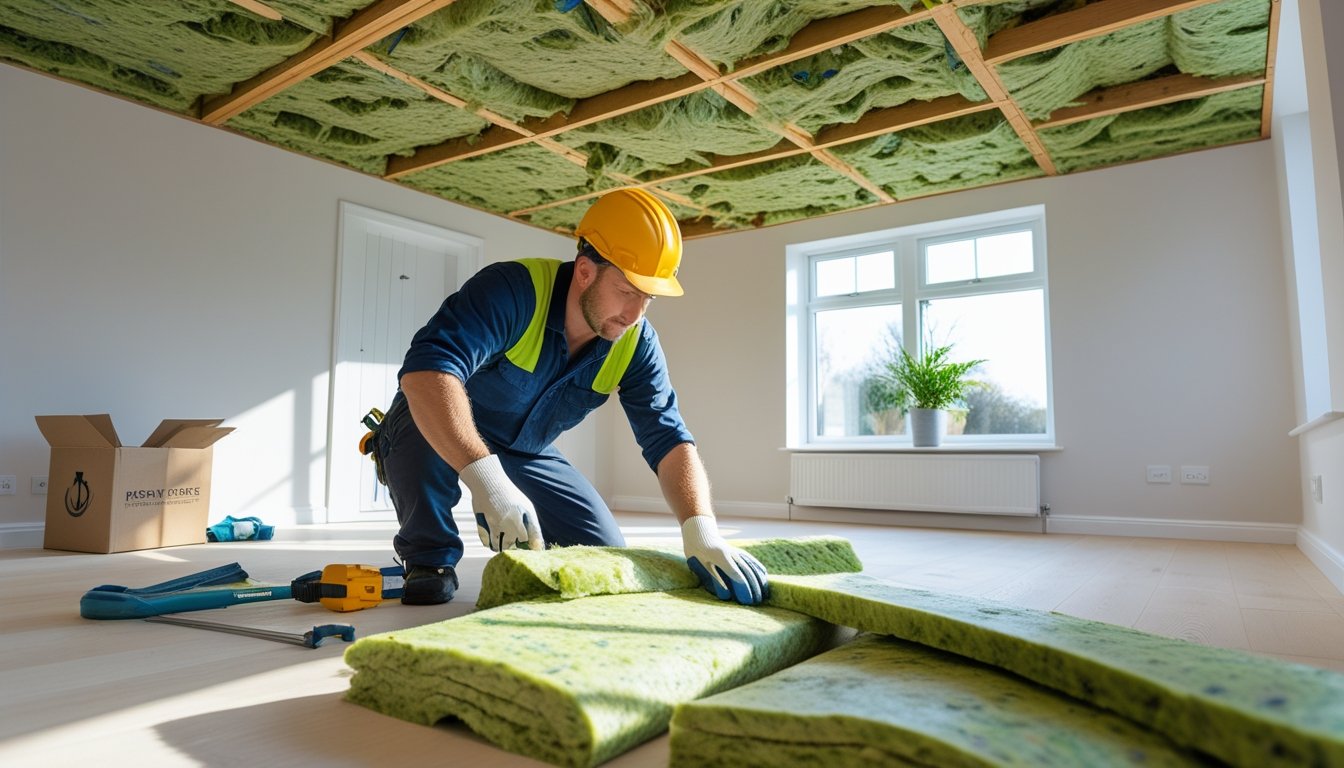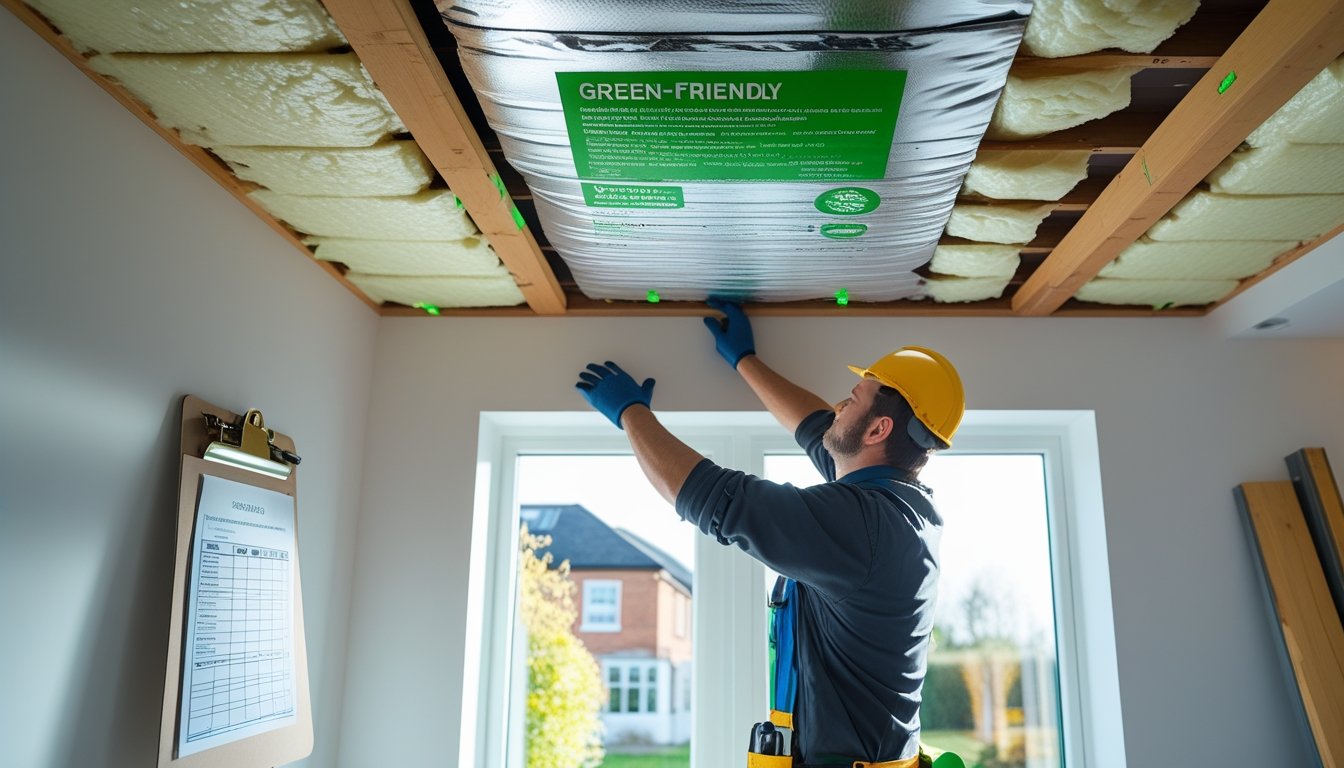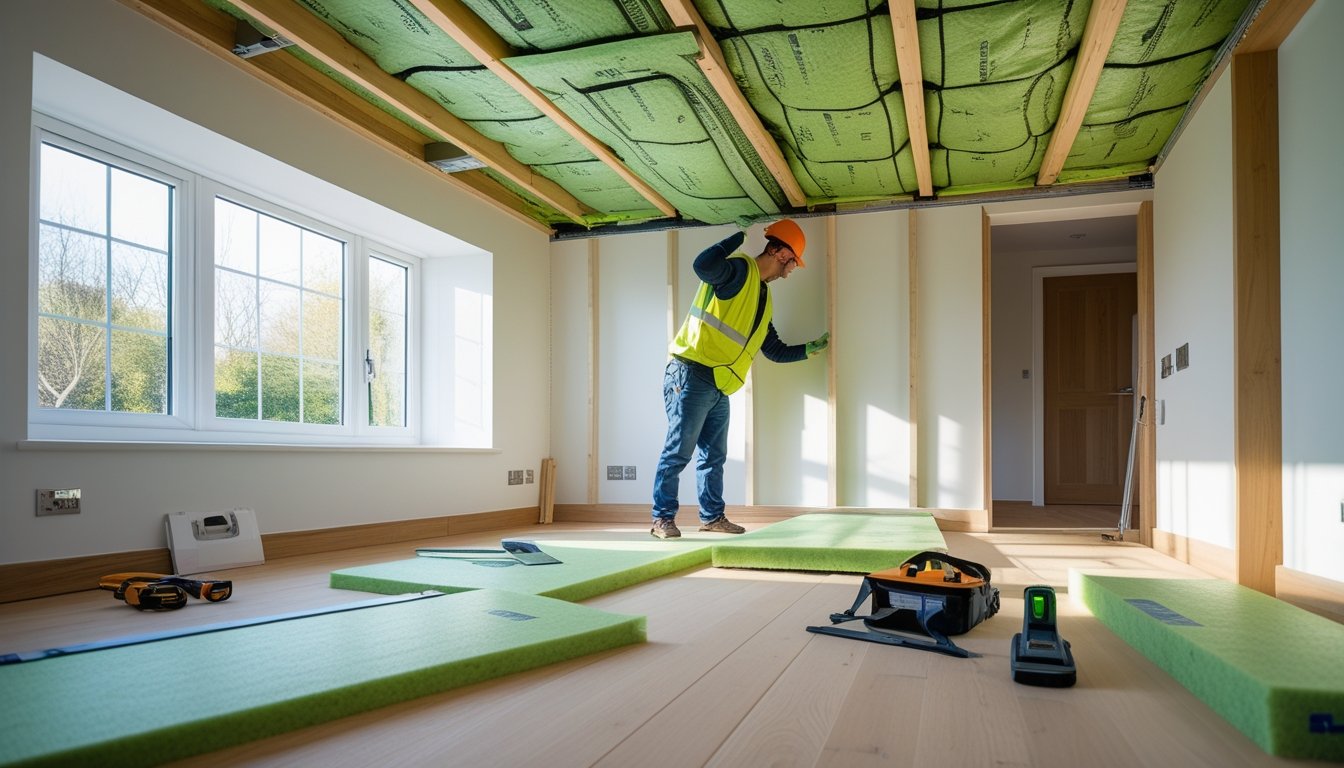Late updated: 05 Jul 2025 14:07
Written by: Eleanor Hartman
Innovative Eco-Friendly Ceiling Insulation Solutions UK: Transforming Sustainable Living
In the evolving landscape of sustainable construction, eco-friendly ceiling insulation solutions in the UK are transforming how we approach energy efficiency. Choosing the right green ceiling materials not only helps in reducing our carbon footprint but also enhances indoor comfort and aesthetic appeal. We've seen an increasing shift towards eco-conscious choices that balance functionality, style, and environmental responsibility.

The options for eco-friendly insulation are diverse, ranging from recycled materials to innovative new technologies designed to maximise energy efficiency. The UK is embracing these advancements by integrating them into both residential and commercial projects. These solutions are not merely trends; they represent a critical step forward in creating sustainable living and working environments.
Moreover, the support from government grants and initiatives further propels these sustainable endeavours by offsetting costs and encouraging widespread adoption. The continued evolution of insulation technology promises not just to meet but exceed our standards for energy efficiency and thermal comfort.
Key Takeaways
- Choosing eco-friendly ceiling insulation reduces carbon footprint and enhances comfort.
- The UK offers diverse and innovative insulation options for varied applications.
- Government initiatives support widespread adoption of sustainable insulation.
Key Eco-Friendly Ceiling Insulation Solutions in the UK
In the UK, exploring eco-friendly ceiling insulation options is crucial for enhancing energy efficiency and promoting sustainability. Our focus will cover natural fibres, recycled materials, and innovative techniques, each offering specific benefits for environmentally-conscious building improvements.
Natural Fibre Insulation Materials
Natural fibre materials like hemp, wood fibre, and cork offer excellent eco-friendly insulation solutions. These materials are highly renewable and possess a low environmental footprint, making them ideal for sustainable living. Hemp, for instance, is notable for its rapid growth and adaptability, requiring minimal water and pesticides.
Wood fibre insulation provides a balance of energy efficiency and moisture regulation. It helps to maintain indoor air quality due to its non-toxic nature, preventing harmful emissions within living spaces. Cork, with its impressive thermal and acoustic insulation properties, is another renewable option derived from oak tree bark. These natural fibres are not only biodegradable but also support UK industries focused on sustainable materials.
Recycled and Renewable Insulation Technologies
Recycled insulation materials such as cellulose and recycled cotton can significantly reduce waste and promote sustainability. Cellulose, made from recycled newspaper, is treated with non-toxic fire retardants, making it both safe and effective for ceilings. Its ability to fill gaps and settle in existing cavity spaces ensures that energy efficiency is maximised.
Recycled cotton insulation utilises denim waste, providing a softer and safer alternative to traditional fibreglass. It is also treated to deter pests, enhancing its functional lifespan. Renewable insulation technologies extend to the use of sheep's wool, which naturally regulates moisture and efficiently insulates. This promotes energy-saving attributes while supporting natural UK resources.
Innovative Installation Methods and Techniques
Innovative installation methods are transforming the eco-friendly insulation landscape. Spray thermal insulation is one technique that offers comprehensive coverage, achieving a seamless insulation barrier that minimises energy loss. This method is effective in irregular spaces and conforms to various shapes without gaps.
Vacuum insulation panels represent another cutting-edge approach, known for their thin profile and excellent thermal performance. These panels are ideal in space-constrained environments where traditional materials might be impractical. We also see the adoption of prefabricated insulated ceiling panels that streamline the installation process and reduce on-site waste. By embracing these innovative techniques, we can enhance the efficiency and sustainability of our living spaces in the UK.
Sustainability Standards and Support for Ceiling Insulation

Exploring sustainability standards and support within the UK context, we find an array of initiatives. These initiatives aim to promote sustainable insulation practices in buildings, ensuring environmental responsibility and financial viability. Our approach encompasses green certifications, government grants, and the broader vision of a sustainable future.
UK Green Building Standards and Certifications
The UK Green Building Council sets forth guidelines which play a vital role in standardising sustainable building practices. Certifications like BREEAM (Building Research Establishment Environmental Assessment Method) ensure that buildings meet high environmental standards, promoting sustainable materials and energy efficiency.
To obtain these certifications, buildings must adhere to rigorous criteria, covering aspects like energy use, material choices, and environmental impact. Typically, projects that meet these standards benefit from increased market value and reduced operational costs. It’s not just about meeting current demands; it prepares us for a sustainable future by incorporating forward-thinking design principles.
Government Grants and Funding Opportunities
Government support is instrumental in enhancing the adoption of sustainable insulation solutions. Various grants and funding schemes, such as the Green Homes Grant, encourage property owners to invest in eco-friendly insulation. These financial incentives reduce the initial investment burden, making sustainable upgrades more accessible.
Some programmes focus on residential properties, while others include commercial and public buildings. Eligibility criteria vary, often requiring compliance with specific energy efficiency improvements. These opportunities empower communities and businesses to contribute actively towards reducing carbon footprints and promoting sustainable development.
Building Towards a Sustainable Future
In the pursuit of a sustainable future, integrating innovative insulation solutions is crucial. With growing environmental concerns, the construction industry is shifting towards greener technologies, incorporating sustainable materials and practices in our building projects.
This shift is not merely about reducing energy consumption; it fosters a culture of sustainability. Innovative ceiling insulation solutions, for instance, can significantly lower energy costs and enhance comfort. By championing these efforts, we emphasise the importance of long-term ecological balance, ensuring that our building practices contribute positively to the environment.
Aligning with these efforts, it becomes possible to construct buildings that remain adaptable and resilient to future environmental challenges. Our commitment to sustainability helps carve out a path for future generations where eco-friendly practices are the norm rather than the exception.
Frequently Asked Questions

We address common inquiries about eco-friendly ceiling insulation. Our focus is on optimal material choices, thermal efficiency, environmental benefits, and potential financial support within the UK.
What are the benefits of using hemp as a sustainable insulation material in the UK?
Hemp insulation is known for its low environmental impact. It provides excellent thermal and acoustic insulation properties. Furthermore, it is mould-resistant and helps regulate indoor humidity.
Which eco-friendly insulation boards offer the highest thermal efficiency?
Insulation boards made from materials like wood fibre or cork are reputed for high thermal efficiency. These materials not only insulate well but also contribute positively to indoor air quality.
Can cellulose insulation be considered a competitive green alternative for home installation?
Yes, cellulose insulation, made from recycled paper products, is both energy-efficient and cost-effective. Its ability to fit into tight spaces makes it a versatile option for retrofitting old buildings in the UK.
What are the key considerations when choosing natural insulation materials for UK homes?
When selecting natural insulation, consider factors like thermal performance, moisture resistance, and compatibility with existing building structures. Additionally, the materials should be safe and free from harmful chemicals to ensure indoor air quality.
How does eco-friendly ceiling insulation contribute to energy savings and reduced carbon footprint?
Eco-friendly ceiling insulation significantly reduces heat loss during winters, lowering energy consumption. By decreasing reliance on heating systems, we can cut down on carbon emissions and save on energy costs.
Are there any government incentives for installing green insulation solutions in the UK?
Yes, the UK government offers various schemes and grants to encourage energy-efficient home improvements. These incentives can help reduce the initial investment required for installing eco-friendly insulation solutions.